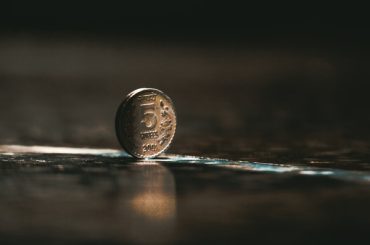The era of information, opinion and activism…!
It took one pioneering moment from the 80s to completely disrupt the rules of interpersonal communication…
The advent of INTERNET!
Cut to 2021; social networks have enabled individuals to stand up for their opinions and values at an unimaginable scale.
From #BlackLivesMatter attracting the collective outcry of half a million people, Greta Thunberg making impassioned pleas for climate change to #MeToo breaking the shackles of sexual harassment and, more recently, social media becoming a hotbed for global solidarity against the pandemic – the examples of social activism are numerous and perpetuated into the lessons of history.

Effectively, the internet gave a voice to everyone! Lo and behold, this voice permeated into every aspect of people’s lives, so much so that purchasing decisions expanded beyond the purview of product & price assessment to how closely brands align with an individual’s value system.
Now more than ever, brands are under the spotlight for what they say. How do they “humanize” themselves?
To cut the chase, brands are continuously asking that what is their purpose?

However, before purpose became the “buzzword” that it is today, one brand activated purpose, masterfully, over the years, to reach its iconic status – DOVE!
What is a Brand Purpose?
Before we dive into the heady world of Dove, it’s important to understand what Brand Purpose is and what it most certainly isn’t!
Often, the brand purpose is mistaken for CSR initiatives. If not that, brand purpose, mission, and values are interchangeably used in the colloquial language. In simple words, a brand purpose is a reason for which brands stand for; it’s a reason which makes a brand think beyond the bottom line. A brand’s purpose defines the role of the brand in society.
It took a little-known author, way back in 2009, and his now-famous Ted Talk to give purpose the centerstage it occupies now. All he said was, “Start with Why.”
“Why” lays the foundation for the purpose of any organization, big or small. A genuine Brand Purpose should successfully answer the question: “Beyond making money, why do we do what we do?”
If you haven’t guessed by now, we must thank Simon Sinek for giving purpose to “Purpose.” Through his largely popular Golden Circle, he urged brands to think, act and communicate from the inside out, to understand their reason for being. Purpose, in a perfectly ideal world, should aim to end the brand’s self-involved relationship with society – by helping people & communities solve problems.
Except, more often than not, it sits dormant in the PowerPoints of marketing teams and is never really acted upon in cohesive, meaningful ways. “Are brands trying to make money or help people?” is, sadly, a discourse that has never reached equilibrium in the marketing world.
Not to forget, numerous brands have attempted to ride the “Purpose” bandwagon with opportunistic campaigns that scream zero substance or commitment.
The outcome – People have become even more skeptical of brands today than in the past.
So, why does brand purpose strategy of Dove hits a different note?
Hint – AUTHENTICITY & ACTIONABILITY
Journey of Dove to a purpose driven brand : Stand with Consumers to stand out of competitors
It all started with a market study of 3,000+ women from 10 different countries on how they perceived beauty. What was touted as an attempt to rejuvenate the brand paved a momentous shift from “product-centric advertising” to “consumer-centric advertising.”
Fewer than 5% of women considered themselves beautiful, heralding the launch of massively celebrated Dove’s “Campaign for Real Beauty.” A brilliant movement marketing strategy that defied the stereotypical beauty standard of a young, model-thin body with perfect features. The goal was to make a fundamental change in the way that women viewed themselves.
Through a series of billboard advertisements showcasing photographs of regular women in place of professional models, the ads invited passers-by to vote on whether a particular model was, “Fat or Fab” or “Wrinkled or Wonderful”, with the voting results dynamically updated and displayed on the billboards.

The Real Beauty campaign resonated at several levels, earnestly addressing the deep rooted insecurities and self-esteem issues of young women to which customers could empathize.
Needless to say, the campaign was a smash hit, garnering 150M USD worth of media exposure. The “Evolution” video spot, showcasing women transformed by the hair, makeup, lighting, and image manipulation for a photo shoot, was a monster hit, smashing 1.7 million views on YouTube within a month, while the “Real Beauty Sketches” was viewed more than 50M times 12 days after release.
The overall sales of Dove products jumped from $2.5 to $4 billion in the campaign’s first ten years. Dove bars became the number one preferred soap brand in the U.S. and Unilever’s best-selling product company-wide.
The ultimate voice of women with meaningful customer engagement
The fact that the “Real Beauty” program continues to spark discussions 17 years after its debut firmly points to its innate value as a social change agent – a feat fewer campaigns will ever achieve.
However, Dove’s ongoing success is largely based on actively listening and engaging with audiences through rich omnichannel customer experiences – a pivotal step in tracking & measuring success.
The “Dove Self Esteem Project” is a perfect example of the brand listening and supporting the interests and concerns of its consumers. The campaign offers resources for parents, educators, youth leaders, and mentors to conduct their own “self esteem workshops.
Since the inception of Dove Self-Esteem Project, more than 625,000 teachers have delivered Dove self-esteem workshops and more than 1.5 million parents have engaged with the digital content.” Very recently, the project released an inspiring video called ‘Reverse Selfie’ to address the impact of editing apps on the self-esteem of young people, firmly supported by tips and toolkits on making social media a healthier environment.
Never the one to miss a beat, Dove also created an Ad Makeover interactive campaign, a Facebook-based venture that allows women to subvert depressing advertisements on weight loss, toxic beauty standards, and cosmetic surgery with feel-good messages designed by Dove. The statistics bear witness to the campaign’s success: 71% of the women who participated in the campaign said that they felt more beautiful.

Additionally, Dove started a conversation on social media with Project #ShowUs asking women to showcase their real beauty. The project featured 5,000 images of 179 women from 39 countries, and these were shot by 116 women, highlighting underrepresented backgrounds such as handicapped, black, Asian, pansexual, elder, and more. In hindsight, the project created a sense of community that allowed everyone to join the movement of empowering women.
Reinforcing allegiance to purpose with potent partnerships
Over the years, Dove has not only broadened its digital footprint through multi-touchpoint campaigns but also enabled robust partnerships, all while maintaining its single-mindedness around support of “real beauty.”
Case in point, Dove partnered with Twitter, in an effort to identify negative tweets about beauty and body image, responding to them in real-time as part of the #SpeakBeautiful campaign. This was coupled with a creative advertisement about the predicament of body shaming presented during the Academy Awards pre-show.
The partnership also underpinned the launch of “No Digital Distortion” mark – a symbol indicating that a picture hasn’t been digitally altered across all branded content, serving as an uninterrupted reminder of real beauty across both digital and non-digital channels.
More recently, Dove signed a three-year partnership with UNICEF, in an effort to help 10 million young people in Brazil, India, and Indonesia gain better self-esteem and body confidence by 2022.
The bottom line…
As social consciousness gains wider momentum amidst an incorrigible pandemic – organizations are expected to activate brand purpose into meaningful cultural movements. And the brand purpose of Dove perfectly teaches us this message.
Except activating brand purpose is a perilous, slippery slope! Brand purpose is more than one memorable activation. Our recall fades over time, which is to say, even the best of campaigns fall into the abyss of nothingness.
It takes consistent work to make a brand part of something bigger than itself, for its purpose to be more than just a phenomenon.
What’s the secret formula behind “Real Beauty Campaign’s” longevity? It was backed by solid research into fundamental attitudes and insecurities of women, communicated with captivating storytelling – OVER and OVER AGAIN!
As we stare wide eyed, yet vulnerable, at the multitude of issues challenging the world…
The time for action is now, for brand purpose to become the greatest flag bearer of hope – today & tomorrow!
-AMAZONPOLLY-ONLYWORDS-START-
Also, check out our most loved stories below

Why did Michelin, a tire company, decide to rate restaurants?
Is ‘Michelin Star’ by the same Michelin that sells tires, yes, it is! But Why? How a tire company evaluations became most coveted in the culinary industry?

Johnnie Walker – The legend that keeps walking!
Johnnie Walker is a 200 years old brand but it is still going strong with its marketing strategies and bold attitude to challenge the conventional norms.

Starbucks prices products on value not cost. Why?
In value-based pricing, products are price based on the perceived value instead of cost. Starbucks has mastered the art of value-based pricing. How?

Nike doesn’t sell shoes. It sells an idea!!
Nike has built one of the most powerful brands in the world through its benefit based marketing strategy. What is this strategy and how Nike has used it?

Domino’s is not a pizza delivery company. What is it then?
How one step towards digital transformation completely changed the brand perception of Domino’s from a pizza delivery company to a technology company?

BlackRock, the story of the world’s largest shadow bank
BlackRock has $7.9 trillion worth of Asset Under Management which is equal to 91 sovereign wealth funds managed. What made it unknown but a massive banker?

Why does Tesla’s Zero Dollar Budget Marketing Strategy work?
Touted as the most valuable car company in the world, Tesla firmly sticks to its zero dollar marketing. Then what is Tesla’s marketing strategy?

The Nokia Saga – Rise, Fall and Return
Nokia is a perfect case study of a business that once invincible but failed to maintain leadership as it did not innovate as fast as its competitors did!

Yahoo! The story of strategic mistakes
Yahoo’s story or case study is full of strategic mistakes. From wrong to missed acquisitions, wrong CEOs, the list is endless. No matter how great the product was!!

Apple – A Unique Take on Social Media Strategy
Apple’s social media strategy is extremely unusual. In this piece, we connect Apple’s unique and successful take on social media to its core values.
-AMAZONPOLLY-ONLYWORDS-END-

















